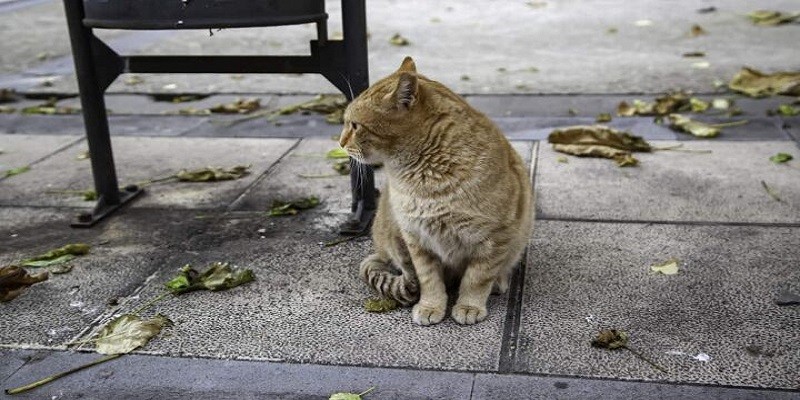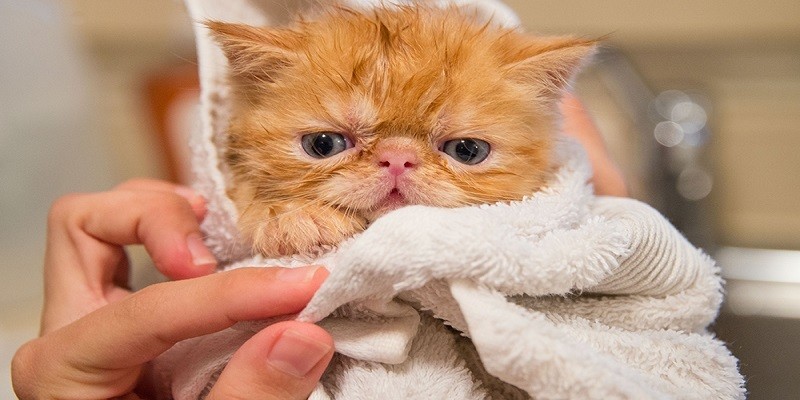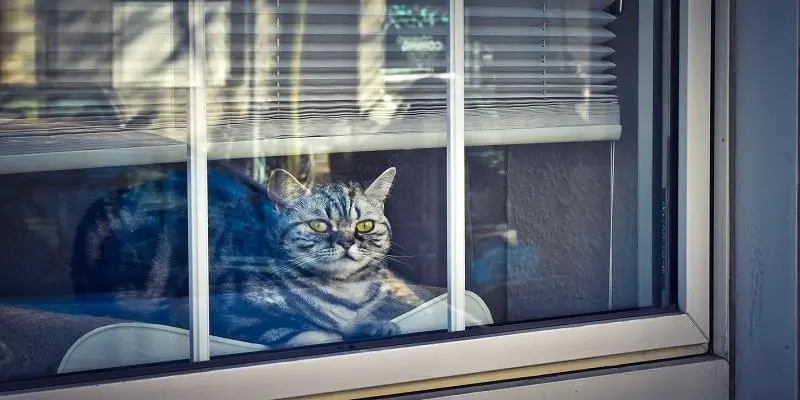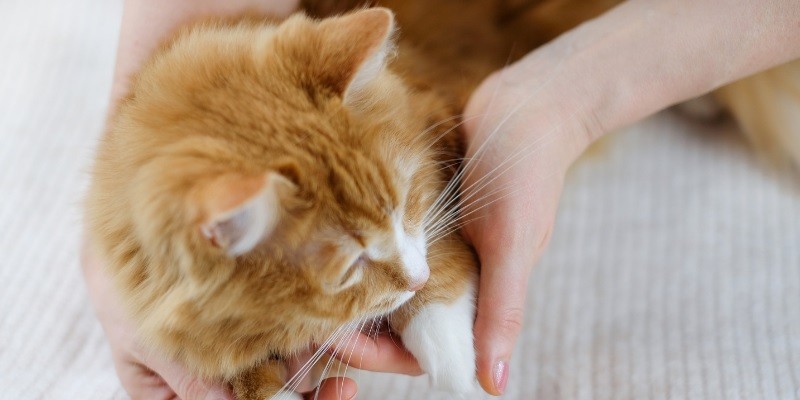Last Updated on June 6, 2023 by Pauline G. Carter
Cats start feeling cold when the temperature drops below 45°f (7°c). It is essential to provide your cat with adequate warmth during the cold season to keep them comfortable and healthy.
During winter, cats can suffer from various cold-related illnesses, including hypothermia and frostbite. Providing your cat with warm bedding, clothing, and keeping them indoors in a well-heated space can help prevent these illnesses. It is also crucial to monitor your cat’s behavior during cold weather and observe changes in their appetite and energy levels.
Any unusual changes may indicate a cold-related disease, and prompt veterinary attention can help prevent any serious health issues.

Credit: www.embracepetinsurance.com
How Cats Regulate Their Body Temperature
Cats are known for their agility, independence, and their unique charm, but how well can they withstand cold temperatures? Most cats prefer warm environments, but their ability to regulate their body temperature helps them handle colder weather. In this blog post, we will discuss how cats can regulate their body temperature and thrive in low temperatures.
Insulation Provided By Fur
Cats have a thick layer of fur, consisting of two types of hair – primary and secondary. The primary hair is longer and thicker while the secondary hair is finer and provides warmth. When it gets colder, the hair on a cat’s body stands up, creating a layer of insulation and trapping warm air close to their skin.
Additionally, the undercoat grows thicker during colder seasons in preparation for colder temperatures. The fur also acts as waterproofing, protecting them from moisture while providing insulation.
Sweating Through Paw Pads
Unlike humans, cats do not sweat through their skin; they sweat through their paw pads. When cats become too warm, they sweat to remove heat from their bodies. This is why it’s crucial to keep their paw pads dry during cold weather to prevent the loss of body heat.
Panting And Licking
Cats can pant to regulate their breathing and body temperature. However, panting is not very effective in cats, and they tend to rely on other methods to regulate their body temperature. Cats also lick their fur to clean themselves and regulate their temperature.
Their saliva contains water and evaporates from their fur, effectively cooling them down.
Curling Up
Lastly, cats tend to conserve heat by curling up in a ball, which helps keep their bodies warm by minimizing their exposure to the cold air. Curling up also helps them conserve energy because it requires less energy to maintain body heat when their body is in a compact position.
Cats can handle colder temperatures better than some may expect. They have unique ways of regulating their body temperature, from insulation, sweating through their paw pads, panting and licking, and curling up. Understanding how cats regulate their body temperature is vital to ensuring their comfort and wellbeing, especially during cold weather.
At What Temperature Do Cats Start To Feel Cold?
Factors Affecting Cold Tolerance
Cat owners must understand the various factors that impact their feline friend’s cold tolerance level. Cats are naturally resilient to cold weather, but several factors can affect their ability to regulate their body temperature. Here are some of the critical factors affecting cold tolerance in cats:
- Age: Elderly cats or kittens are more prone to cold weather and can become hypothermic even in moderately cold temperatures.
- Coat: Different breeds have different coat types. Short-haired cats can get cold faster than longhaired breeds.
- Body type: Leaner cats with less body fat and a smaller frame may find it harder to stay warm.
- Health: Chronic illness and disease can impact a cat’s ability to maintain their body temperature and make them more susceptible to cold weather.
- Nutrition: Cats require the proper nutrients to maintain their body temperature effectively.
Signs Of Being Cold
Cats are experts at hiding their discomfort or pain; it’s essential to look for signs that your cat might be feeling the cold. When you see your cat exhibiting the following signs, provide them with a warmer environment or cozy shelter.
- Shivering: Cats shiver as a response to low environmental temperatures.
- Crying or meowing: When cats cry more than usual, they are trying to communicate their discomfort.
- Curling up: When cats curl up into a ball, it’s an attempt to trap warmth into their bodies.
- Slow movements: Cats reduce their movements to conserve energy and try to maintain body heat.
- Cold ears and paws: Feeling the ears and paws can indicate low body temperature and coldness.
Remember that cats might not be able to communicate their discomfort in a direct way. It’s every feline owner’s responsibility to provide their pets with a warm and cozy living environment, especially during winters.
Preparing Cats For Cold Weather
At What Temperature Do Cats Get Cold?
As colder months approach, cat owners need to be aware of the impact of frigid weather on their pets. Cats may shiver, lose confidence, or become restless due to the cold, and also become more susceptible to certain illnesses. It is important to prepare cats for the cold weather to ensure their well-being.
In this post, we’ll cover some tips on how to do so, with an emphasis on grooming and coat care, providing warm bedding, and balancing indoor and outdoor time for cats. We will also discuss strategies to help feral cats during the winter months.
Grooming And Coat Care
Grooming and coat care are crucial aspects of preparing cats for colder weather. The denser and fluffier a cat’s coat, the better it can retain heat, so it’s important to keep it well-groomed. Here are some tips for maintaining your cat’s coat during the winter months:
- Brushing: Brushing removes dirt and debris from your cat’s fur, as well as evenly distributes natural oils, resulting in a healthier coat. Brush your cat regularly to prevent matting, which can cause your cat’s coat to become less effective at insulation.
- Bathing: Avoid bathing your cat excessively during the winter, as this can remove their natural oils and dry out their skin. Use a cat-safe and gentle shampoo if you do need to bathe your cat.
- Trim fur: Keeping the length of your cat’s fur at a reasonable length is important during the winter. Long hair between their toes can become matted with ice and snow, which can cause pain in your cat’s paws.
Providing Warm Bedding
Providing warm bedding is also essential to help cats tolerate the cold weather. Here are some tips for setting up an ideal indoor environment for your feline companion:
- Comfortable beds: Place several warm and comfortable beds around your home to encourage your cat to rest in a warm and cozy spot.
- Heat source: Provide a warm and safe heating source, like a heating pad or radiant heater. Ensure that the heat source is properly secured, monitored, and away from any fabrics and electrical appliances.
- Cozy shelter: Set up a cozy shelter near your home for outdoor cats. You can use a small insulated box with blankets and straw to keep them warm.
Indoor Vs. Outdoor Cat
Owners of both indoor and outdoor cats need to be mindful of the impact that cold weather can have on their pets. Here are some tips on how to keep both types of cats safe and comfortable during colder temperatures:
- Indoor cats: If you have an indoor cat, make sure that the indoor temperature is kept at a comfortable level, ideally around 70 degrees fahrenheit. Keep windows and doors securely closed to prevent cold drafts and make sure to provide extra bedding and warm spots to rest.
- Outdoor cats: Limit outdoor time for cats, and keep an eye on them, ensuring that they are not exposed to the cold weather for extended periods. Consider dressing your cat in a cozy sweater or jacket, and check their paws regularly for frostbite and ice buildup.
Considerations For Feral Cats
During colder months, feral cats may experience severe stress, illness, and even death. Here are some ways to help feral cats during winter:
- Shelter: Build or place a shelter made of wood or plastic with insulation and bedding in a location that’s safe and dry.
- Feeding: Provide adequate food and water to help feral cats maintain their health. Make sure the water is not frozen and replace your cat’s water frequently.
- Monitoring: Always monitor outdoor cats for signs of illness, injury, or frostbite.
Remember that cats vary in their tolerance of cold weather. By using these tips, you can help your pets stay safe and comfortable, particularly as temperatures continue to drop during colder months.
Keeping Cats Warm In Cold Weather
Cats are known for their resilience and independence, but that doesn’t mean they don’t feel the cold. If you are a cat owner, you might wonder at what temperature do cats get cold and if they need any special treatment in the winter.
The truth is, cats become vulnerable to cold weather just like humans do. If the temperature drops below freezing, your feline friend will need proper care to stay warm and healthy. Here are some tips on how to keep your cat warm during cold weather:
Creating A Warm Environment
- Keep your house warm: Set your thermostat to a temperature that feels comfortable to you and your cat. If you’re out of the house most of the day, consider installing a timer that will turn the heat up when you’re at home.
- Provide a cozy bed: Make sure your cat has a warm and comfortable place to sleep. A cat bed with soft blankets is ideal. You can also add a heated pad to the bed to keep your cat warm.
- Block drafts: Check your doors and windows for drafts. Use weather stripping or draft stoppers to prevent cold air from getting in.
Dressing Cats In Winter Clothing
- Cat sweaters: Yes, they do exist! A cat sweater can help keep your cat’s body warm. However, be sure to choose one that fits your cat well and doesn’t restrict movement.
- Cat boots: If your cat likes to go outside in the snow, you might consider getting them some boots to keep their paws warm. This is especially important if you live in an area where salt and other ice-melting chemicals are used on the roads and sidewalks.
- Cat hats: While they can look cute, hats are not essential for keeping your cat warm. Only put a hat on your cat if they are comfortable wearing it.
Feeding Adequate Amounts Of Food And Water
- Increase food portions: During the winter, your cat’s body burn extra calories to stay warm. Make sure to increase their food portions as needed to keep up with the calorie burn. Just remember, cats should not become overweight, so monitor their weight and adjust food portions accordingly.
- Avoid frozen water: Make sure your cat always has access to fresh water by changing to warm water more often. You can also use a pet water dispenser that has a heating element to keep the water from freezing.
Following these tips can help keep your cat comfortable and healthy during even the coldest winter months. By creating a warm environment, dressing your cat in winter clothing if necessary, and feeding them adequate food and water amounts, you can rest assured that your cat is protected from the cold and happy and healthy throughout the year.
Understanding Hypothermia In Cats
At What Temperature Do Cats Get Cold?
Cats are known to be independent and resilient animals that can survive in different weather conditions, but sometimes they may need extra care and protection. In this blog post, we will discuss the ideal temperature for cats and what happens when they are exposed to extremely cold weather conditions.
So, let’s dive into the topic and understand hypothermia in cats.
Hypothermia is a serious condition that occurs when a cat’s body temperature drops below the normal range. It is a common concern during winters, and outdoor cats are more prone to hypothermia. Some important things to know about hypothermia in cats are:
Causes Of Hypothermia
There are various reasons why cats may develop hypothermia, but some of the common causes are:
- Cold weather conditions such as snow, wind, and rain
- Exposure to water, especially when cats get wet
- Inadequate shelter or protection from harsh weather conditions
- Health issues or injuries that affect a cat’s ability to regulate body temperature
Symptoms Of Hypothermia
The symptoms of hypothermia in cats can vary depending on the severity of the condition. Some common signs to look out for are:
- Shivering and shaking
- Lethargy and weakness
- Lack of coordination and confusion
- Slow heart rate and breathing
- Cold ears, feet, and nose
- Pale or blue gums
If left untreated, hypothermia can lead to serious complications and even death. Therefore, it is important to take immediate action when you notice any of these symptoms.
Hypothermia is a serious condition that can affect cats in cold weather conditions. It can be prevented by providing adequate shelter and protection and monitoring your cat’s health. If you suspect that your cat has hypothermia, seek immediate veterinary care.
By taking proactive measures, you can keep your cat safe and healthy during the winter months.
Frequently Asked Questions Of At What Temperature Do Cats Get Cold?
At What Temperature Do Cats Get Cold?
– cats can start feeling discomfort when temperatures drop below 45°f, but it depends on the cat’s breed, age, and health condition.
How Can I Tell If My Cat Is Too Cold?
– a cat shivering, seeking warmth, curling up and tucking in legs, nose, and tail, and decreased activity are signs that the cat might be too cold.
What Should I Do If My Cat Is Too Cold?
– provide additional sources of warmth such as blankets, beds, or warm pet pads. Consult a vet if the cat shows abnormal behavior, or symptoms of hypothermia.
Should I Leave The Heating On For My Cat?
– it’s okay to leave indoor heating at a comfortable temperature, but be careful to avoid overheating or fire hazards. Cats can adapt to cooler temperatures if given time to do so.
Can Cats Stay Outside During Winter?
– while some cat breeds can tolerate cold temperatures, it’s generally not recommended to leave cats outside in freezing temperatures. Provide a heated outdoor shelter or bring them indoors.
Conclusion
Now that we’ve come to the end of our discussion on what temperature cats get cold, it’s clear that our feline companions can withstand fairly low temperatures. However, it’s important to note that every cat is unique in how they handle cold weather, and it’s necessary to watch for signs of discomfort in your pet.
You can monitor your cat’s behavior, energy, and appetite to ensure they stay healthy and happy during the colder months. Providing a warm place for your cat to sleep, with a cozy blanket or bed, can go a long way in keeping them comfortable.
Regular visits to the vet for a checkup can also help you stay on top of any potential health concerns. Remember, keeping your cat warm and comfortable during chilly weather is vital, and by following the tips we’ve discussed, you can safeguard your furry friend’s well-being.
About Author (Pauline G. Carter)

Pauline G. Carter is a well-known pet blogger who has written about the world of pets for several years. She is passionate about pets, from cats and dogs to birds, reptiles, and poultry. Her blog, which is updated regularly, is filled with articles and guides on pet care, nutrition, and training. She also shares her experiences and observations on pet ownership, making her blog relatable and informative for pet lovers. She is a true animal advocate and is dedicated to promoting responsible pet ownership. Let’s Go …





